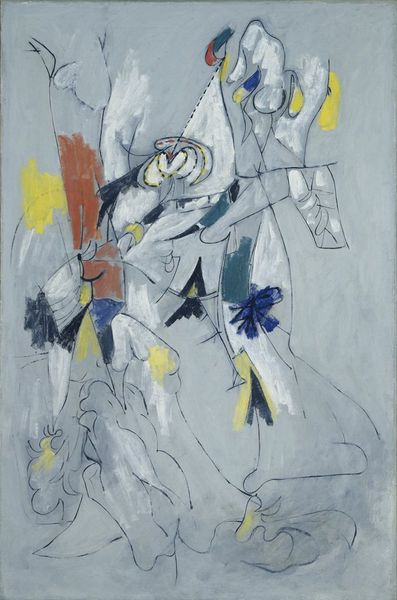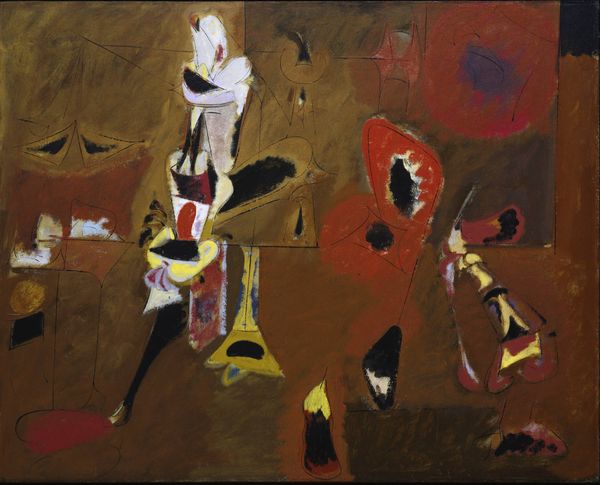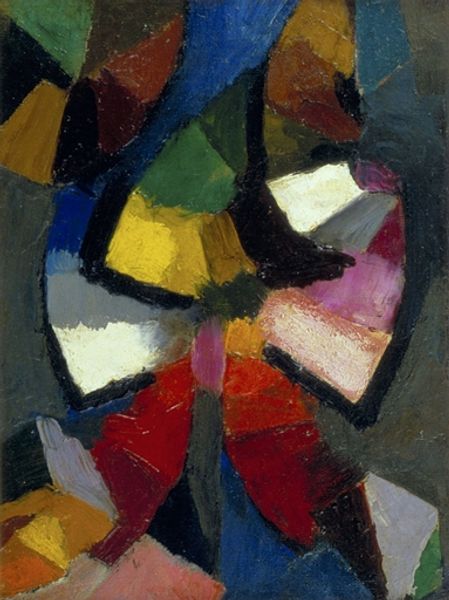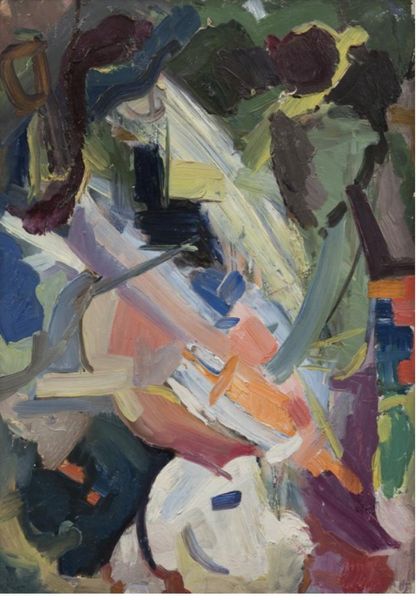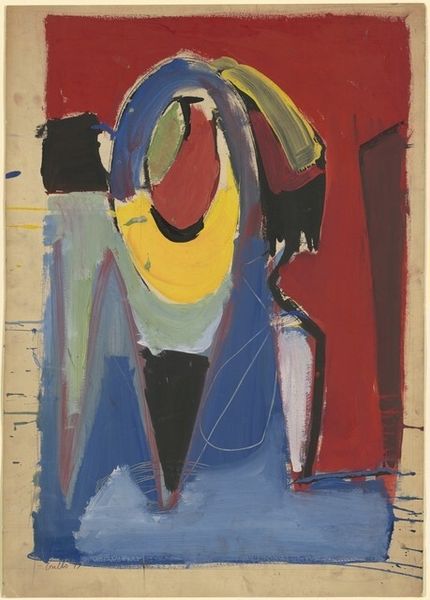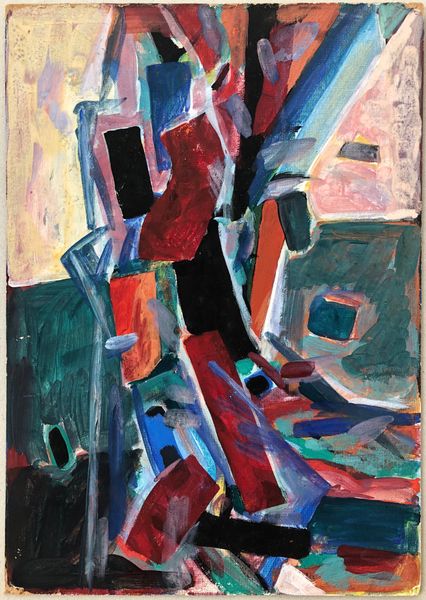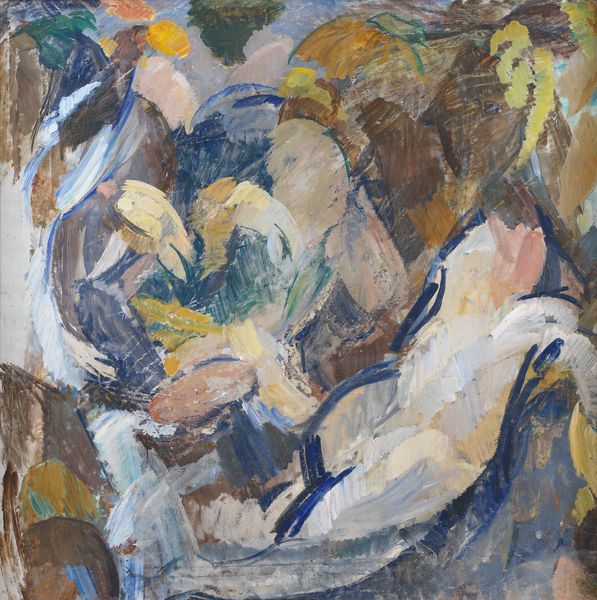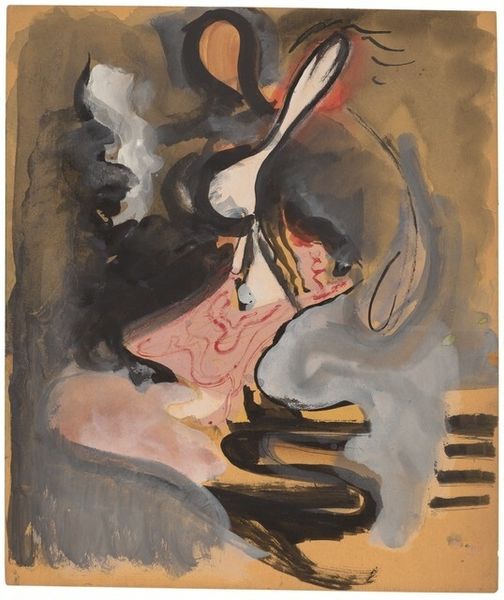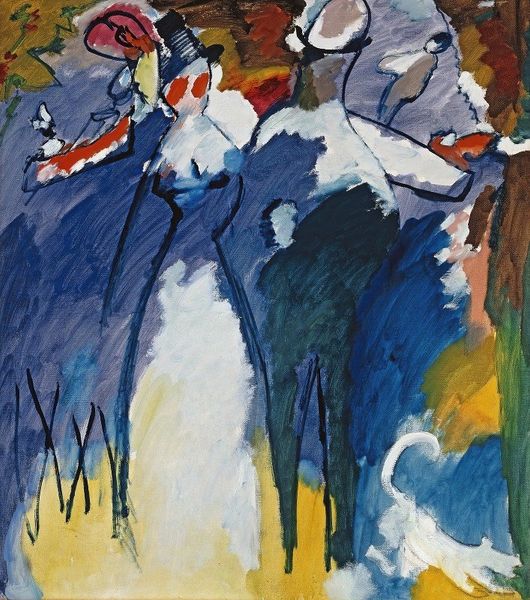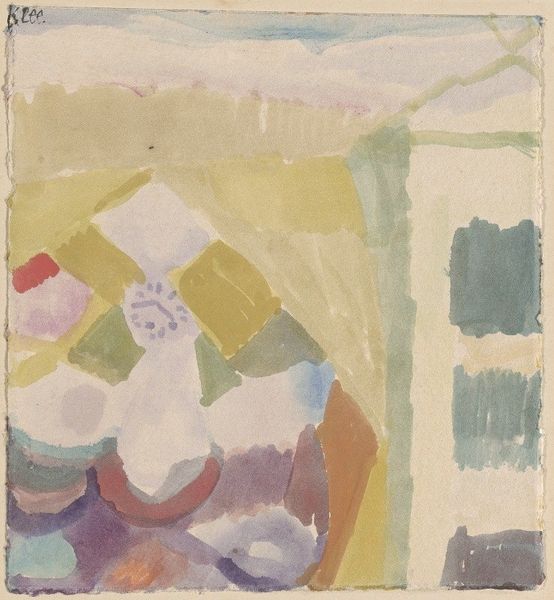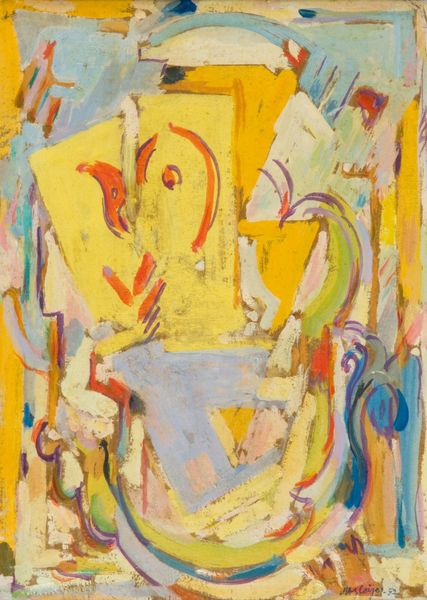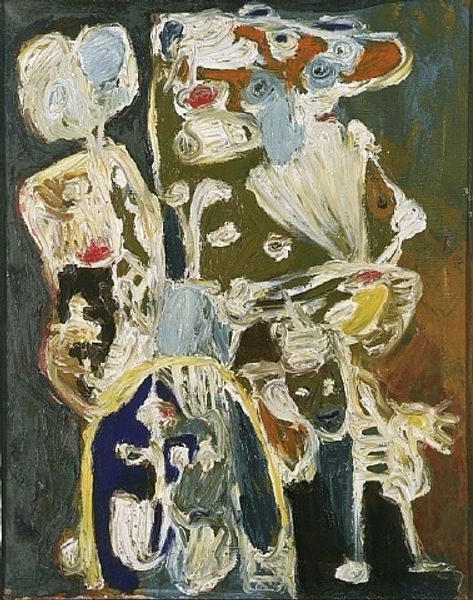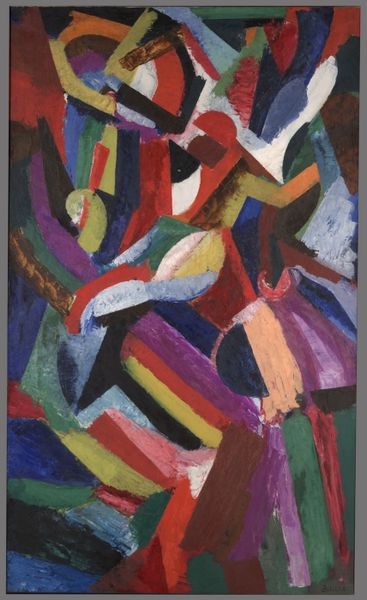
oil-paint, impasto
#
abstract-expressionism
#
abstract expressionism
#
oil-paint
#
landscape
#
form
#
oil painting
#
impasto
#
abstraction
#
modernism
Copyright: Public domain
Arshile Gorky's Waterfall is an abstract painting that blurs the line between representation and pure form. Painted in the United States during the 1940s, it reflects a moment when American art was grappling with its identity on the world stage, caught between European influences and a desire for something new. Gorky, an Armenian immigrant, embodies this tension. His work draws on the language of European Surrealism, yet it hints at personal memories and a connection to the natural world. Waterfall is part of a crucial period in the institutional history of art. Museums and galleries were increasingly open to abstraction. The socio-political context of the time, marked by war and displacement, arguably encouraged artists to turn inward, exploring subjective experiences rather than directly representing the world around them. To truly understand this painting, a historian will dive into Gorky's biography, the history of abstract art, and the cultural landscape of mid-20th century America, tracing the complex web of influences that shaped this ambiguous, yet evocative work.
Comments
No comments
Be the first to comment and join the conversation on the ultimate creative platform.
